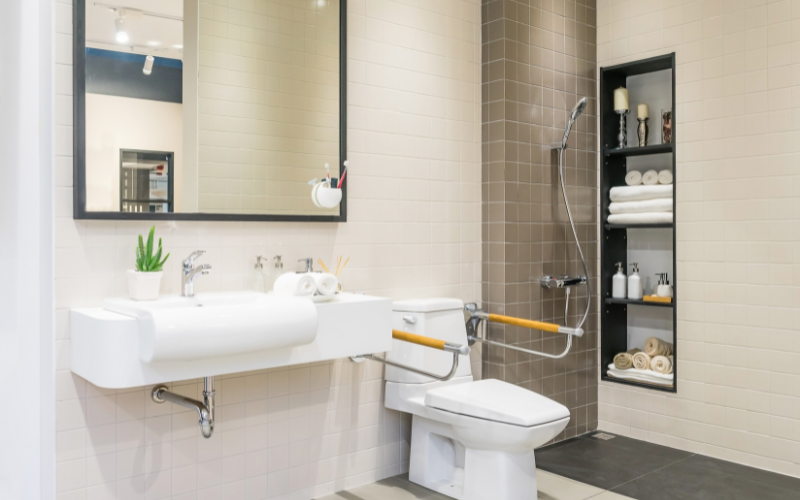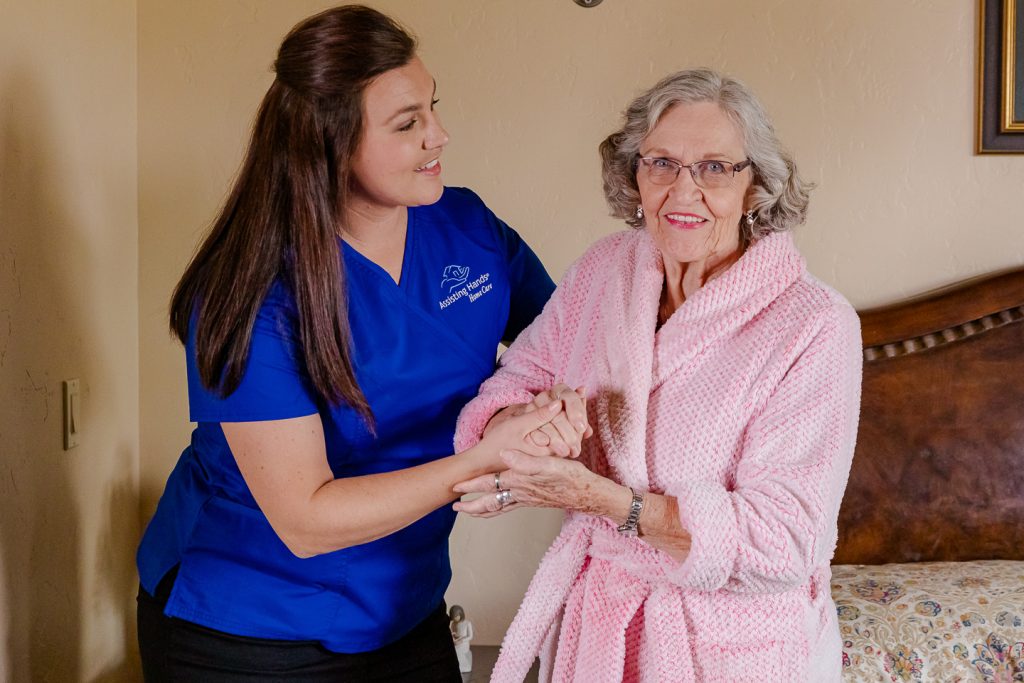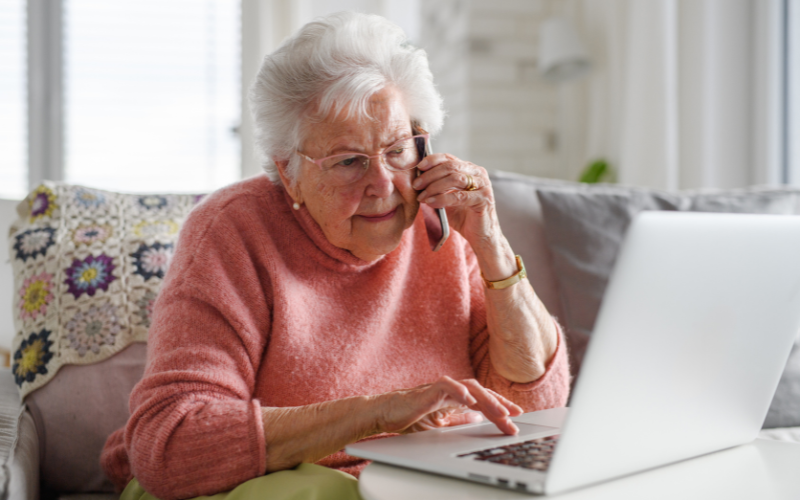
The bathroom is an essential but risky part of the home. One in four elderly Americans falls every year, and the bathroom is the number one place these accidents occur. Safety is paramount for seniors. The following are 10 helpful tips to keep older adults safe in the bathroom.
Why are bathrooms dangerous for seniors?
Wet floors, sharp vanity corners, and hard surfaces make the bathroom a perilous place for seniors to be. A slip and fall can send them to the emergency room and result in hospitalization. Plus, they may develop a fear of falling, which decreases their activity level and increases fall risks.
How do caregivers increase bathroom safety?
Caregivers can prevent accidents and injuries in the bathroom by inspecting the area for hazards and making adjustments to improve safety for aging care recipients. By reducing the risk for falls, caregivers boost seniors’ confidence and independence in living at home.
1. Install Grab Bars
Grab bars provide extra support to seniors who use them to stabilize themselves when getting on or off the toilet or upon entering or exiting the shower. Never allow an elderly individual to hang onto a towel rack or toilet paper holder, as these are too weak to support a senior’s bodyweight.
Choose grab bars that can be screwed into the wall (suction bars don’t support full bodyweight). Federal guidelines stipulate that grab bars must support up to 250 pounds. Opt for a color that is different from the wall, so the senior has quick visibility in the event of an emergency.
2. Add a Rubber Mat to the Shower
Getting into a slippery shower can be daunting for seniors. Increase traction to the shower or tub floor by laying a rubber mat; alternately, non-skid decals that adhere directly to the tub floor work well, too. Seniors experience extra grip as they stand inside the shower or tub.
3. Place a Mat Outside the Shower
Dripping with water, seniors may feel trepidation upon stepping out of the bath. Ease their fears and increase their safety by placing a non-slip mat on the floor outside the tub. A soft mat may also be more comfortable than placing their feet on the cold bathroom tiles.
4. Add a Shower Chair
A shower chair inside the bathtub is recommended for older people who tend to become exhausted during a warm bath or who experience difficulty standing for extended periods of time. Ensure extra stability by choosing a shower chair that features non-slip tips.
5. Consider a Bathtub Transfer Bench
Climbing into or out of a slick bathtub can strike fear in the elderly. Reduce the dangers of this transition by installing a bathtub transfer bench. The senior safely sits on the transfer bench and slides to the opposite side rather than attempting to climb out of the tub.
6. Install a Raised Toilet Seat
Getting up from or sitting down on a standard toilet can be a challenge for some seniors, who risk a tumble. The raised toilet seat attaches to the existing toilet and elevates its height. Various sizes are available that can raise the toilet seat anywhere from 2 to 6 inches.
7. Eliminate Clutter
One of the easiest ways to improve bathroom safety is to eliminate clutter. Organize bottles of shampoo, bars of soap, and lotions in the bathroom cabinets instead of leaving them out. Remove clothing and keep the countertops clear. A tidy bathroom is a safer bathroom.
8. Hang a Shower Caddy
While removing clutter is essential, so is keeping necessities on hand. Hang a shower caddy and fill it with shampoo and soaps so that the senior does not have to bend or stretch. Products that are within easy reach prevent the elderly from slipping and falling.
9. Plug in Extra Lighting
The hallway leading up to the bathroom is also a risky space, especially during the night when seniors make emergency trips to the toilet. Enhance their safety by plugging in nightlights. Extra lighting helps older adults transition to the bathroom with fewer fall risks.
Along with nightlights in the hall, caregivers should consider installing motion-sensor lighting in the bathroom. LED motion-sensor lights turn on upon detecting movement. Seniors no longer have to fumble with the light switch in the dark, making their bathroom run safer.
10. Hire a Caregiver
Professional caregivers keep elderly care recipients safe during bathroom use. Caregivers provide physical assistance when seniors use the toilet, step into or out of the shower and for the duration of the bath. These professionals also clear clutter to remove fall hazards.
Bathroom safety should a be priority. The abovementioned safety enhancements are accessible to most caregivers, being cost-effective and requiring little installation expertise. Professional caregivers from Assisting Hands Home Care are also available and recommended for seniors of all ability levels.

Our home care agency provides a valuable service to the elderly. We offer a comprehensive range of non-medical care services that raise the quality of life for seniors living at home. Caregivers strive to boost the physical, emotional, and social health of the older adults we serve.
Responsibilities include help with personal hygiene tasks. We support seniors so that they safely bathe, use the toilet, and groom. Caregivers perform light chores to keep not only the bathroom but the entire home free from clutter and other fall hazards. We also perform fall risk assessments.
Furthermore, we prepare meals, provide transportation, and give medication reminders. Our caregivers offer pleasant senior companionship so that the elderly stay socially engaged and active in their community. Socialization with games, outings, and conversations prevent older adults from feeling lonely, isolated, and depressed.
When the safety and comfort of your elderly loved one are a priority, choose Assisting Hands Home Care. We are privileged to serve the older population living in Frisco, TX | Plano, TX | Allen, TX | Little Elm, TX | Prosper, TX and the surrounding areas. Call us at (214) 609-1340 to schedule a complimentary in-home consultation and learn how the best in local senior home care improves their quality of life.







